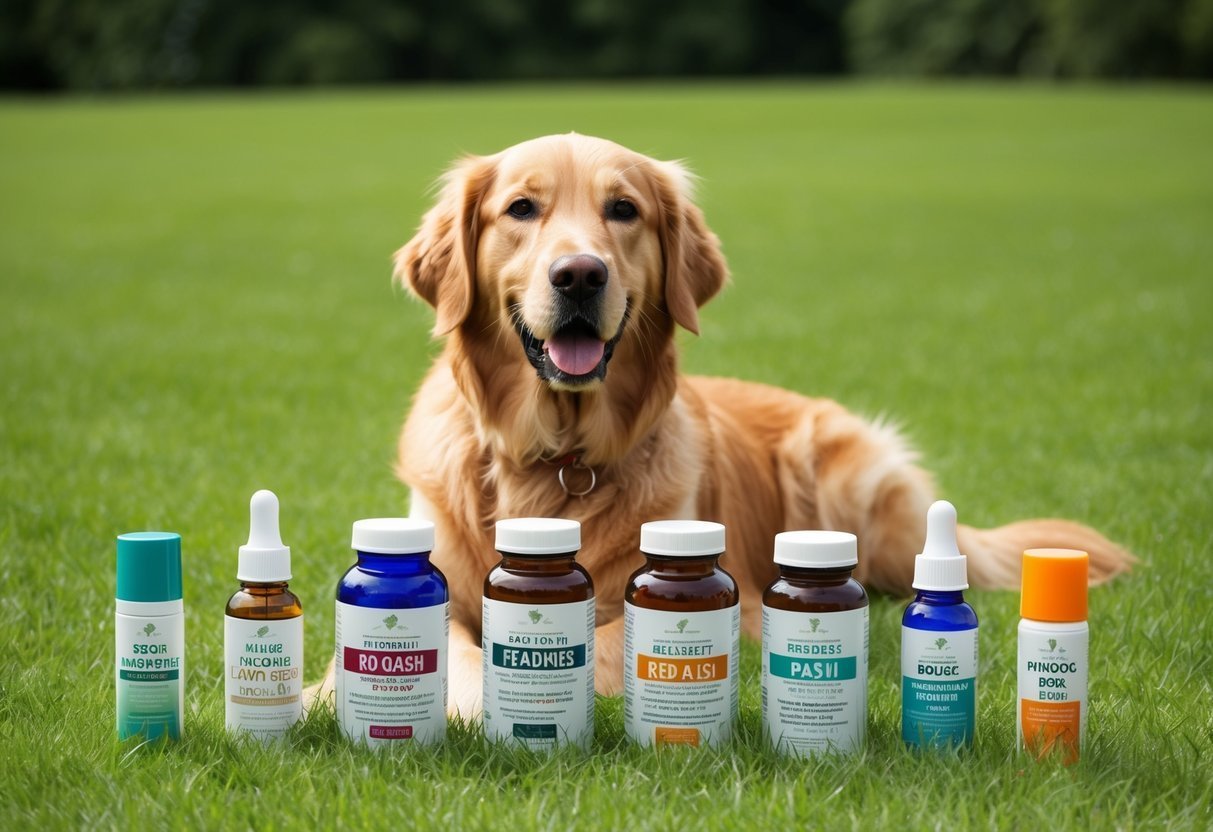Seeing your dog uncomfortable due to a red rash can be distressing.
You must find effective remedies to provide your furry friend with the relief they deserve.
Many dogs experience skin irritations, which can be caused by various factors, from allergies to insect bites.
In this article, you will discover six simple remedies that can help soothe your dog’s rash quickly.
By using readily available ingredients and techniques, you can make your pup feel better in no time.
Let’s explore these remedies so you can give your dog the comfort they need.
Oatmeal Bath Soak
An oatmeal bath soak is a great way to help soothe your dog’s red rash.
It can also relieve itching and irritation.
You likely have the ingredients in your kitchen already.
To prepare the bath, blend plain, unflavored oatmeal until it turns into a fine powder.
Use about one cup for medium to large dogs, and a little less for smaller breeds.
Fill the tub with lukewarm water, then mix in the ground oatmeal.
Place your dog gently in the tub and let them soak for about 10 to 15 minutes.
While they soak, massage their coat in circular motions.
This helps the oatmeal reach their skin for better relief.
After soaking, rinse your dog lightly to remove any leftover oatmeal.
Then, dry them off with a warm towel.
This simple process can help your dog feel more comfortable.
Oatmeal baths are especially helpful if your dog has allergies or skin conditions.
Aloe Vera Gel
Aloe vera gel is a popular home remedy for dog rashes.
It has soothing properties that can help calm irritated skin.
You can apply pure aloe vera gel directly to the affected area.
Make sure to use gel that is free from added chemicals or fragrances.
Look for products specifically made for pets or use the gel directly from an aloe plant.
This ensures it’s safe for your furry friend.
Before applying, do a patch test on a small area of the skin.
Some dogs may have allergies, so it’s best to check first.
If your dog shows any signs of irritation, stop using it right away.
Aloe vera can also be mixed into your dog’s food.
Adding a small amount, about ¼ teaspoon per 10 pounds of weight, may help with internal calming.
Always consult your veterinarian before trying new treatments to ensure they are safe and appropriate for your dog.
Your vet can provide guidance on how to use aloe vera effectively.
Coconut Oil Massage
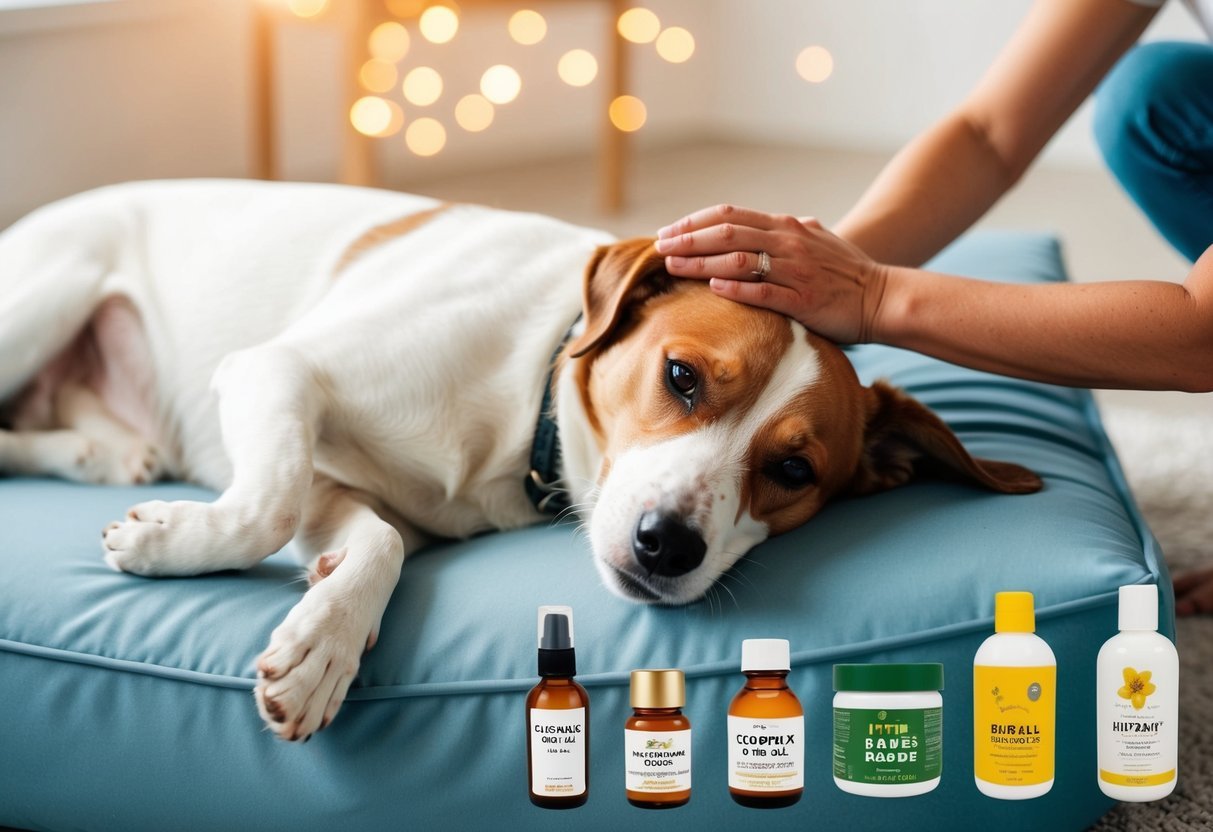
Coconut oil can be great for your dog’s skin.
It’s known for its natural properties that help soothe irritation.
When your dog has a red rash, a gentle massage with coconut oil can provide relief.
Before applying, make sure to do a patch test.
Put a small amount of coconut oil on a tiny area of your dog’s skin.
Wait to see if there is any reaction.
If everything looks good, warmth the oil in your hands until it melts.
Gently massage the coconut oil into the affected area.
Use soft, circular motions to help it absorb into the skin.
Coconut oil can help reduce inflammation and can also prevent infections.
Make sure to use organic, cold-pressed coconut oil for the best results.
This kind of oil is free from additives and is safe for your dog.
If you notice any signs of worsening rash or irritation, contact your vet.
Regular massages with coconut oil can not only help with rashes but can also improve your dog’s overall coat health.
Your furry friend will likely enjoy the attention, making it a win-win for both of you!
4) Baking Soda Paste
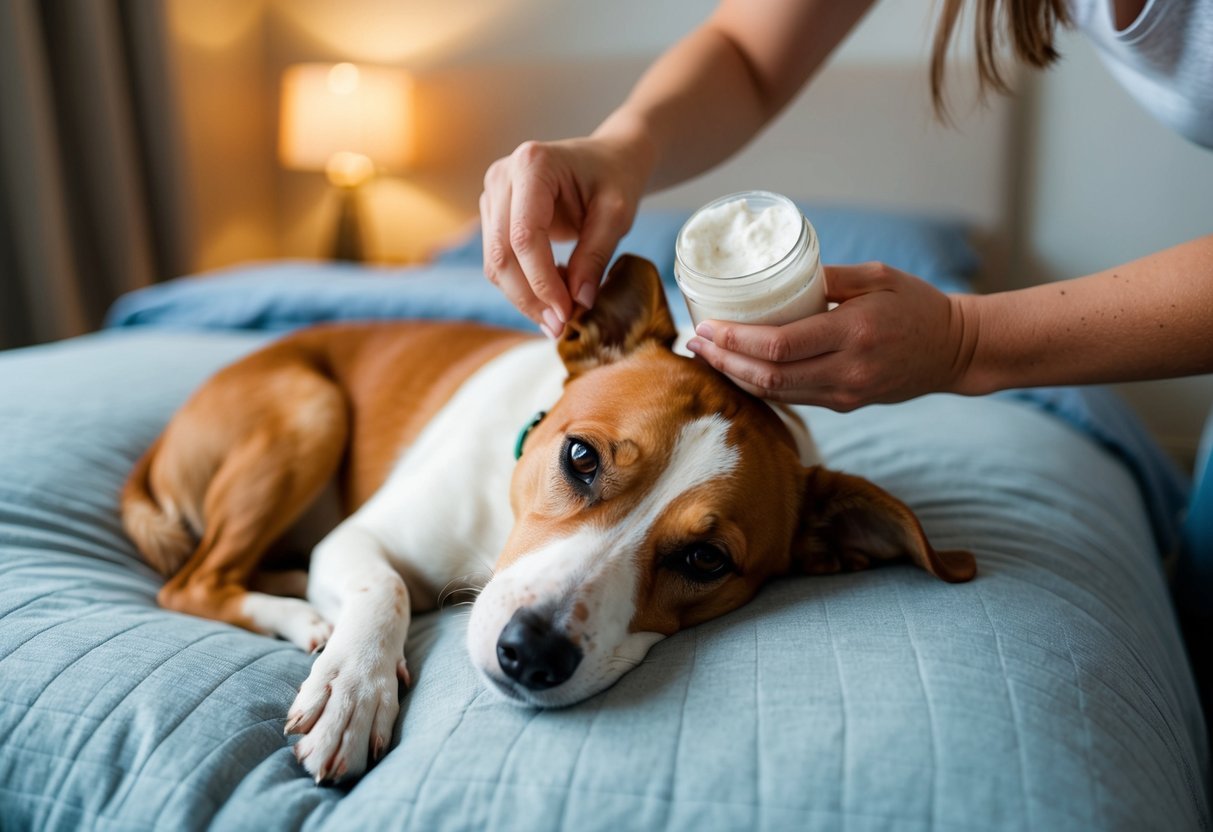
Baking soda is a simple and effective remedy for your dog’s red rash.
It helps calm the skin and soothe irritation.
To make a baking soda paste, mix one part baking soda with one part water.
This creates a thick paste that you can easily apply to the affected areas.
Once you’ve applied the paste, let it sit for about 20 minutes.
This gives the baking soda time to work on the rash.
After the time is up, rinse it off with lukewarm water.
You should notice less itching and inflammation.
Using baking soda is a safe way to provide quick relief for your dog.
It’s a cost-effective solution you can use at home.
Just remember to check for any allergic reactions when trying new treatments.
5) Apple Cider Vinegar Spray

Apple cider vinegar is a popular home remedy for dog skin issues.
You can make an effective spray to help soothe red rashes and itchy skin.
To create the spray, mix equal parts of organic apple cider vinegar and water in a spray bottle.
Be sure to shake it well before each use.
Apply the mixture directly to the affected areas on your dog’s skin.
This can help relieve itching and reduce irritation.
Just remember to avoid using straight vinegar, as it may be too strong for your dog’s skin.
You can spray it 2-3 times a day for the best results.
Many pet owners notice improvements after just a few applications.
Always keep an eye on your dog after applying the spray.
If the rash worsens or doesn’t improve, it’s best to consult your vet for further advice.
6) Calendula Cream
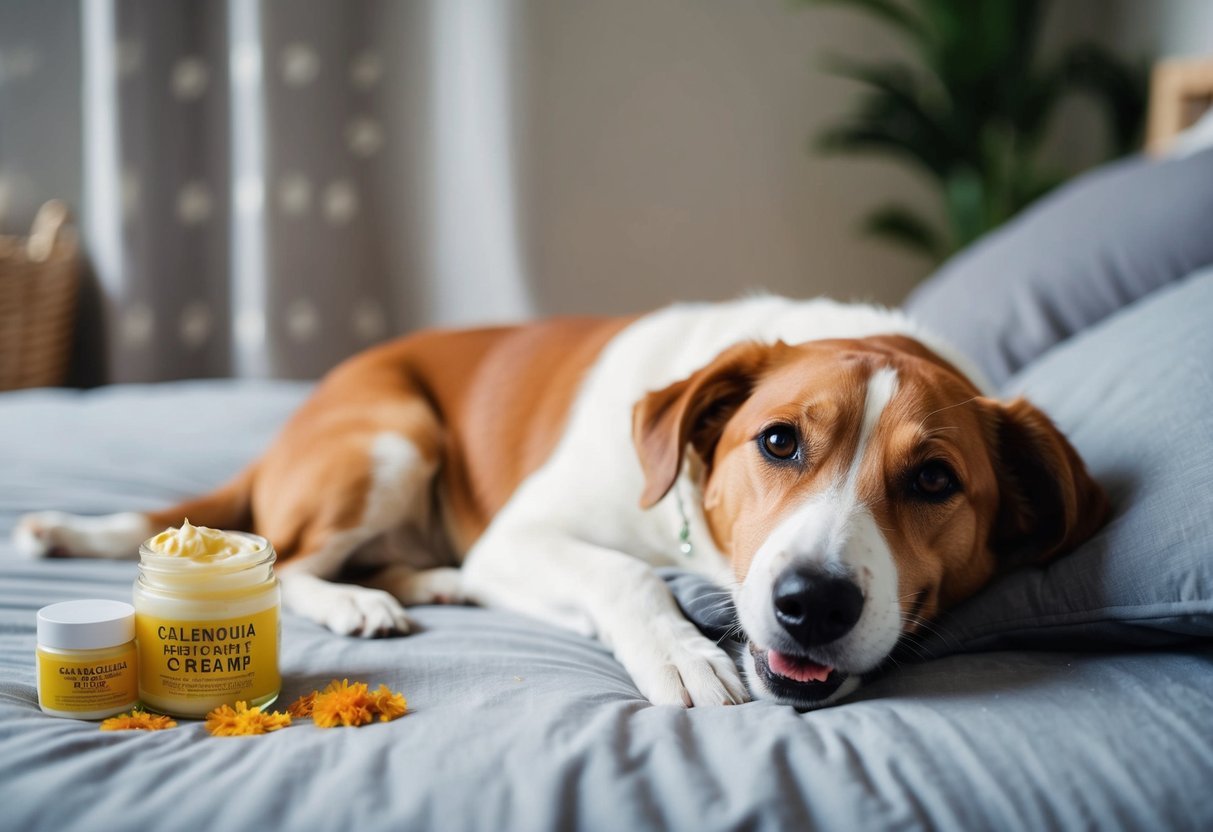
Calendula cream is a natural remedy that can help soothe your dog’s red rashes.
Made from the calendula flower, this cream has anti-inflammatory properties.
You can apply calendula cream directly to areas of irritation.
It calms and protects the skin, making it great for rashes or minor wounds.
Using this cream can help reduce itching and discomfort.
Many dog owners find it effective for treating skin issues.
Calendula is safe for both external use and internal consumption.
If your dog ingests it in small amounts, it can also promote a healthy immune response.
Always check with your vet before starting any new treatment.
They can guide you on the best way to use calendula for your dog’s needs.
For more benefits of calendula, you can read about its uses on Farm Dog Naturals.
This cream is easy to find in pet stores or online.
With a little care, it could provide your dog with the relief they deserve.
Understanding Dog Skin Rashes

Skin rashes in dogs can be uncomfortable and worrying for you as a pet owner.
Knowing what causes these rashes and the types you might see can help you take action swiftly to provide relief.
Common Causes of Red Rashes
Red rashes on your dog can be triggered by several factors.
Allergies are a major culprit.
These can come from food, fleas, or environmental factors like pollen or dust mites.
If your dog has been scratching more than usual, it might be due to an allergy.
Infections are another reason for skin rashes.
Bacterial or fungal infections can lead to redness and irritation.
Keep an eye on any spots that look inflamed or oozy.
Additionally, irritants like certain shampoos or detergents can provoke reactions.
If you’ve changed your dog’s cleaning products, consider going back to a gentle formula.
Observing your dog’s behavior and symptoms closely can guide you in identifying the cause.
Types of Rashes to Watch For
There are different types of rashes to be aware of when it comes to your dog.
Here are a few common types:
- Allergic Dermatitis: This often appears as red, itchy patches, and is caused by allergens.
- Hot Spots: These are localized areas of redness that can become very irritating. They often result from excessive licking or scratching.
- Fungal Infections: Look for flaky, scaly areas on the skin, often accompanied by odor.
- Bacterial Infections: These rashes can appear as welts or bumps and can lead to more serious issues if untreated.
Knowing the signs of these rashes can help you decide when to seek veterinary advice.
Along with monitoring their symptoms, addressing any underlying causes is key to providing your dog with relief.
When to See a Vet
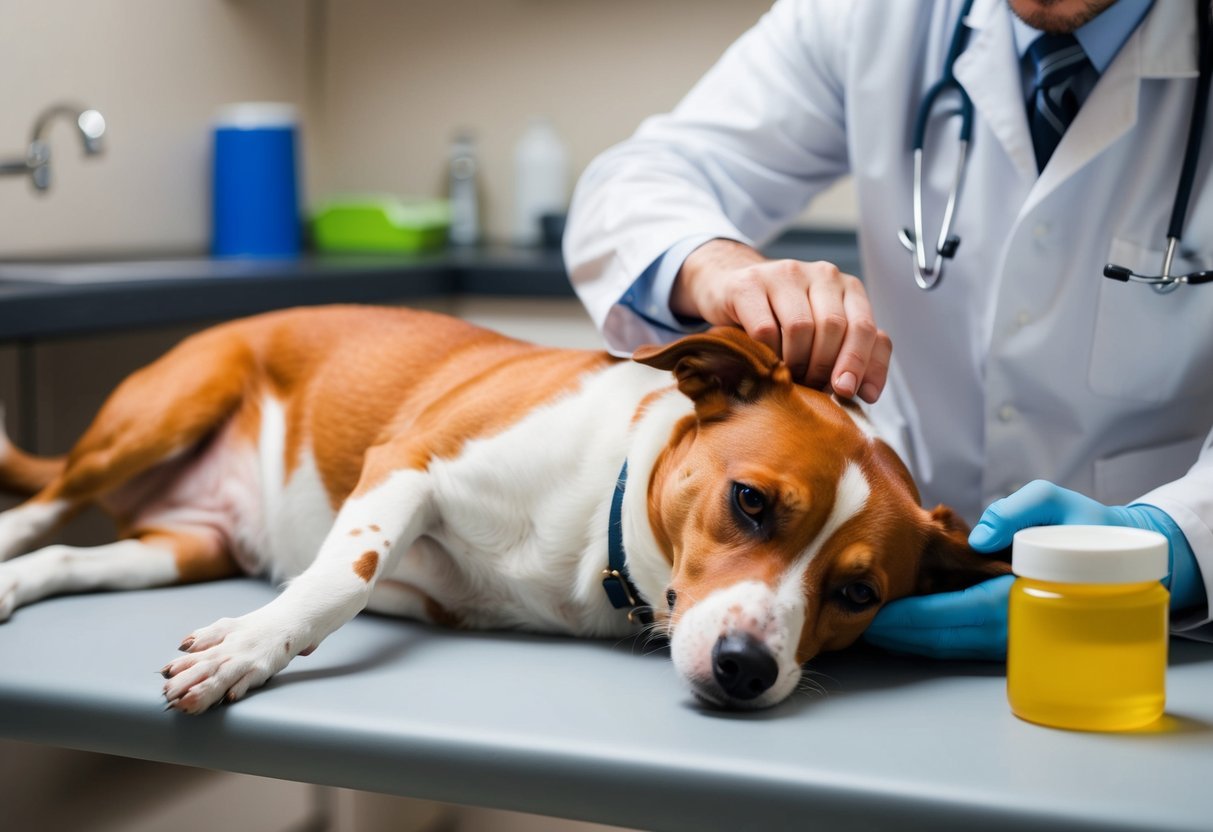
Noticing a rash on your dog can be concerning.
It’s important to know when to take action and consult a vet.
Certain signs and prolonged symptoms can indicate that professional help is needed for your furry friend.
Signs of Severe Rash Reactions
Look for specific signs that your dog may need immediate veterinary attention.
If your dog has a rash and shows any of the following symptoms, it’s time to call the vet:
- Severe itchiness: Constant scratching or biting at the rash may indicate discomfort.
- Swelling: Redness and swelling around the rash can signal a serious reaction.
- Open sores: If your dog has scratched the rash until it has bled, this can lead to infections.
- Fever: A temperature above normal could suggest a deeper problem.
- Difficulty breathing: If your dog is panting heavily or struggling to breathe, seek help right away.
These signs could mean your dog is having a severe allergic reaction or infection.
Prolonged Symptoms to Monitor
Even if the initial rash doesn’t look severe, keep an eye on your dog for extended periods.
If the rash persists for more than a few days or worsens, it could indicate a need for veterinary care.
Pay attention to these symptoms:
- Continued redness: If the rash doesn’t start to fade, it’s a sign your dog may need treatment.
- Lack of appetite: A dog that refuses to eat may be feeling unwell.
- Behavior changes: If your dog seems more withdrawn or irritable, something could be wrong.
- Repeated vomiting or diarrhea: Digestive distress can be linked to skin issues.
Always trust your instincts.
If you’re worried, it’s best to consult a vet to ensure your dog gets the right care.
Frequently Asked Questions
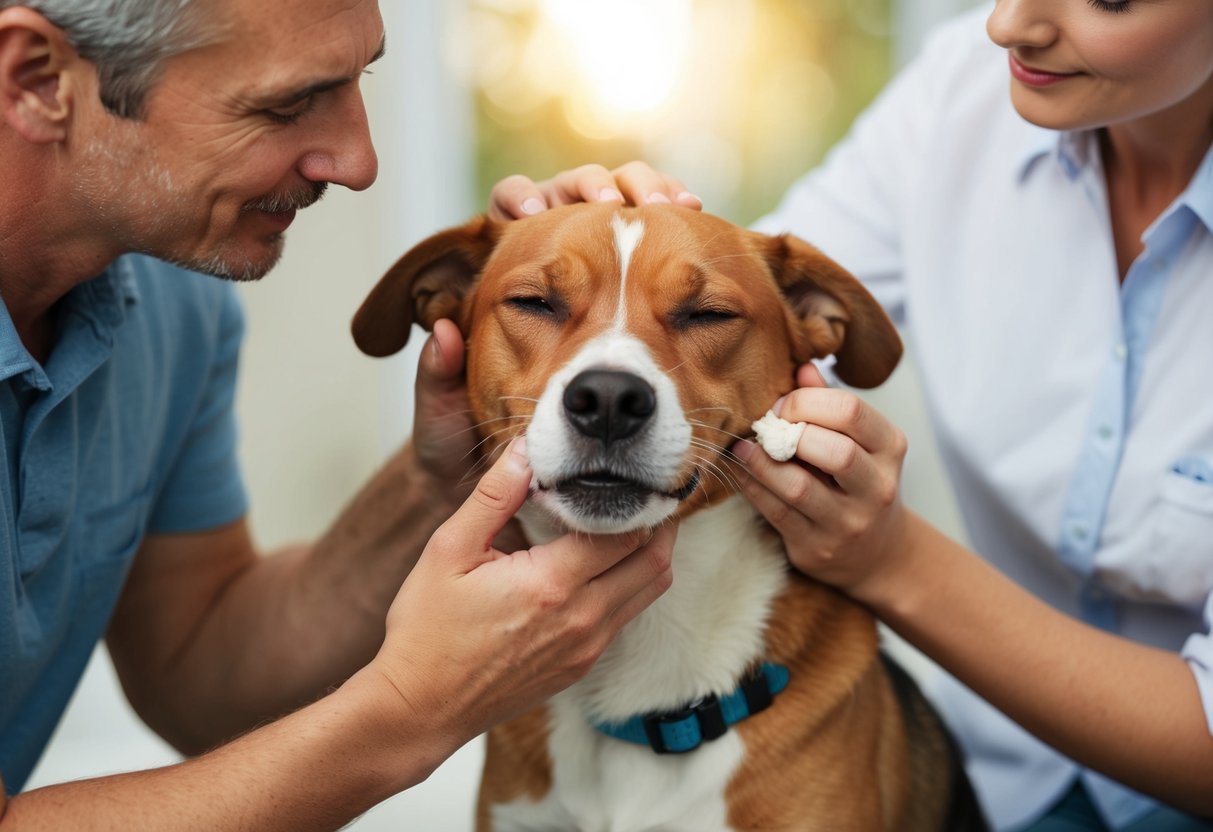
Finding the right way to help your dog with red rashes can be tricky.
Here are some common questions and answers that should help you look after your furry friend.
What’s a good home remedy to soothe my pup’s itchy skin?
An oatmeal bath soak can work wonders for your dog’s itchy skin.
Just grind plain oats into a fine powder and mix it with warm water.
Let your dog soak in this for about 15-20 minutes to help relieve irritation.
Is there something I can whip up at home for my dog’s anti-itch needs?
Yes, you can make a baking soda paste.
Mix baking soda with water to form a thick paste.
Apply this to the irritated area and let it sit for about 10 minutes before rinsing off.
It can help reduce itching and inflammation.
Got any natural fixes for my doggo’s skin infection?
Coconut oil is a great natural fix.
Apply a thin layer of coconut oil to the infected skin.
It has antibacterial properties and helps to soothe the area, making your pup more comfortable.
What’s the best over-the-counter stuff for my furry friend’s itch attacks?
You might want to consider an apple cider vinegar spray.
Mix equal parts water and apple cider vinegar in a spray bottle.
Spray it on the affected area to relieve itching and help with minor skin irritations.
How can I ease my four-legged buddy’s red rash right at home?
Aloe vera gel is highly effective for rashes.
Apply pure aloe vera directly onto the rash.
It cools the skin and promotes healing, giving your pup some immediate relief.
Any human creams that are safe and effective for my pooch’s itchy spots?
Most human creams are not safe for dogs.
However, a hydrocortisone cream can sometimes be used.
But, your vet must approve it first.
Always check with your vet before applying anything to ensure it’s safe for your dog.

